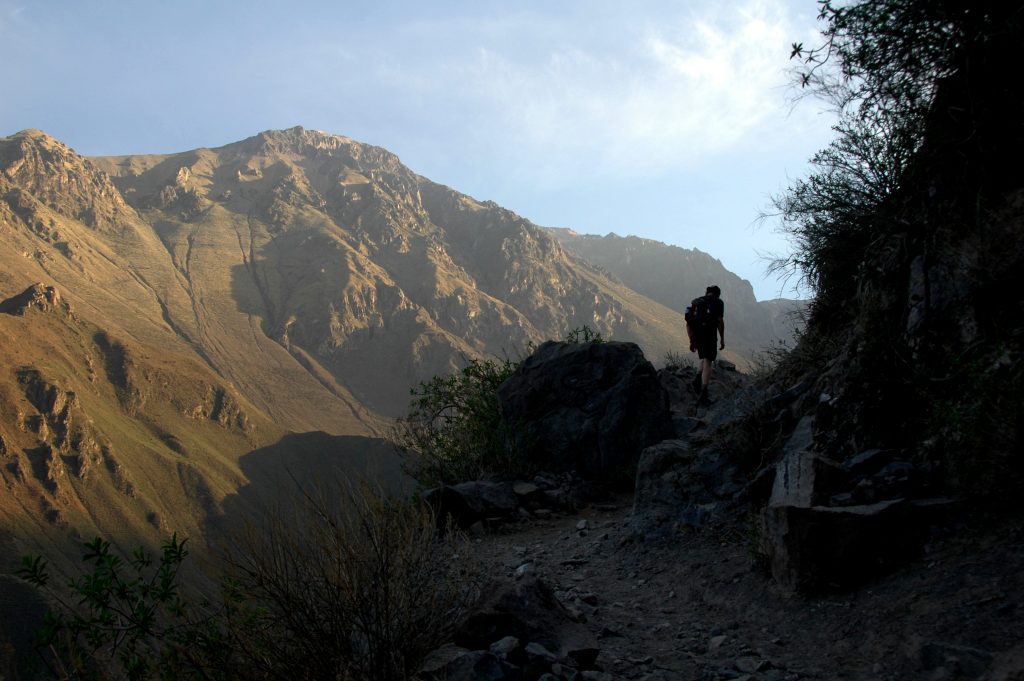Back in 1999, I traveled to Nepal to study mountain ecology in the Himalaya. Part of our trip was a 14-day trek in the Annapurna region. Digital cameras were far from popular then, but somehow I managed to get one loaned to me. Since this was the era before proprietary rechargeable batteries the camera took a whopping four AA’s. Not knowing how fast the camera would use up the batteries and not wanting to cary a bag of AA’s along with me, I looked into rechargeable batteries and a solar charger. Looking back at where the technology was then, I’m amazed that I found a solar charger that held 4 AA batteries. So, I brought 8 batteries – 4 for in the camera and 4 to get charged in the charger that I strapped on the top of my pack to absorb the sun while we were trekking. No shortage of sunshine and the system worked great.
For a number of reasons, one being that there haven’t been many electronic items that people would need to charge on the trail, the idea of harnessing solar power while on the go hasn’t come about until fairly recently. While at the 2011 Summer Outdoor Retailer show in Salt Lake City, it’s obvious that with all the little electronic gadgets made to go on our adventures with us (cameras, GPS, iPods, lights, etc.) saving weight on batteries (not to mention the waste) has driven a number of companies to invest in providing portable solar charging options. It should also be noted these devices are not recommended for use with something as large as a laptop, but exceptions and alternatives may exist. Here’s what I found:

Goal Zero spans the range from huge base camp systems with many arrays of solar panels to small personal systems. Their smallest is the Guide 10 Adventure Kit which comes in two parts: the flexible Nomad 7 solar panel and the Guide 10 battery pack. The battery pack can be used in and of itself to charge via a USB port, 12 volt plug, or you can pull out the 4 AA batteries for use in devices. Battery pack: 2.5 x 4 x 0.75 (inch) / 6.4 oz | Panels: 6 x 9 x 1 (inch) / 12.8 oz | Total weight: 19.2 oz (1.2 lbs) | $159.99

Solio sticks with the small and personal size solar chargers. Their latest, the Bolt, is a single unit with two solar panels and an internal battery to charge your devices from via a standard size USB port. Solio also sends a pencil along to use as a stand so you can point the panels right at the sun. 4.7 x 2.5 x 1.3 in. / 4.8 oz. | $70

Eton has the smallest unit, the Mobius, but it only works for your iPhone 4. The company provides a number of devices for emergency services including solar and hand crank charging lights and radios. On the more social end of the spectrum is a line of solar iPhone music docking stations for at the beach and such. At the time of writing the price was not listed on the website, but I called in and found out it will be $100.

AiQ taks the whole portable power concept and stitches the solar panel right into fabric creating the Solarman Backpack. Because the charging technology is part of the backpack, it’s hard to compare apples to apples regarding weight and size. Though, it is a two part system with a separate battery unit from which you can charge your devices via a full size USB port. The price is competitive at $99.99.
When considering a solar charger, there are at least these two points to keep in mind:
- Most batteries in devices will last a few days. Unless you’re going for a week or more, it’s probably better to just buy a second or third battery instead of investing in a solar charging system. It will also depend on how much you plan to use your device and/or how many devices you plan to take and need to charge. For example, if you’re using the video mode on your digital camera, that will eat up your battery quite quickly and you will want to research what your power consumption is estimated to be.
Tip: The screen is one of the biggest power drains on electronic devices. Set your screen to the minimum “auto off” setting or avoid using it at all if you have a view finder. Also, dim your screen to the lowest tolerable level. For iPod and iPhone music listeners while on the trail, maximize your battery life by setting the phone in Airplane mode so it’s not hunting for a tower, and once your music is rolling, tap the top button to turn the screen off. - One (of maybe many) irony you may encounter is you can only charge your battery in the device in which it is used. This means, even if you have two or three batteries, if you’re plugged in and charging, your ability to use the device can be limited. Also, in regards to cameras, you’re probably going to be doing most of your photography during the day when the sun is available to charge. You could probably rig some sort of tether if necessary. The other option is to buy a separate charger, but then you’re looking at more cost and one more thing to pack along.
Written for Elevation Outdoors Magazine Blog

 Like || Tweet || More Photos || Purchase Photo
Like || Tweet || More Photos || Purchase Photo
